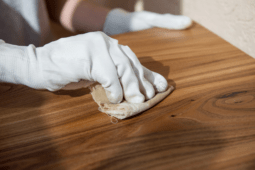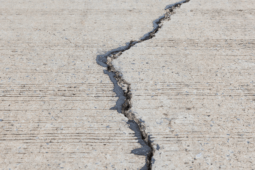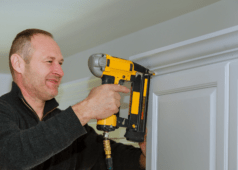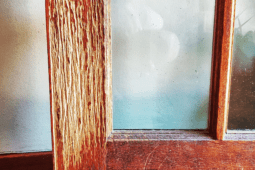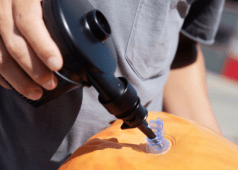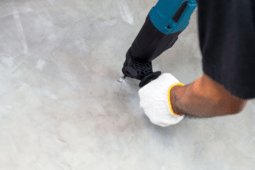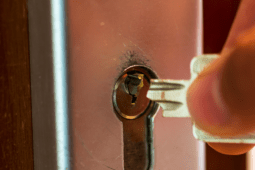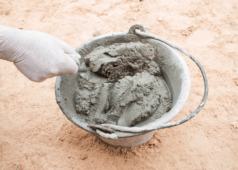How to: Start a Campfire with One Match

Knowing how to start a campfire is an essential life skill, for sure, and most of us have our preferred technique: the lean-to, the tepee, the log cabin. But, even though most fires aren't started in emergency, or even in one-match situations, that's part of the fun. Once you've learned how to do it without turning a gas knob or lighting one of those Duralast logs, lighting a fire with one match (or spark from a starter) becomes part of the game, even if you have a whole box at your side.
Elements of a Fire: The Fire Triangle
Before we get into how to start a campfire, let's talk about what a fire is. Not only is this cool information, it'll help you troubleshoot when things aren't going the way you want.

Here's what happens in a fire:
Heat excites the molecules on the surface of a fuel source, which loosen 'em up and make 'em scatter into a gas. These gas molecules are all amped up from the heat, and they slam into oxygen in the air. The molecule body check breaks up all those molecules and they glow as they release energy: the burn.
These three elements—heat, fuel, and oxygen—are known as the fire triangle. You need all three to have a fire—take away one, and the tripod falls:
1. Cooling: no heat means cold fuel, i.e. you've got nothing to react with oxygen.
2. Starving: no fuel means nothing to heat up, i.e. you've just got hot air.
3. Smothering: no oxygen means nothing to react to the heated fuel.
It's like a party with people, a cake, and a venue—take away the cake, and the people have nothing to eat; take away the venue, and the people have nowhere to eat their cake; take away the cake, and it's people in an empty room.
Here's a fascinating 4-minute video from PBS explaining the process with using a candle as an illustration:
How to Start a Campfire
Let's apply what we've learned of the fire triangle to our one-match fire. Here are the elements we're working with:
1. Heat: the friction from our match gives our first bit of heat.
2. Fuel: tinder and wood—let's get to that in a second.
3. Oxygen: the air around you, which is about 20% oxygen at low altitude, fulfilling the 16% required for combustion.
Fire craft is fuel management
The thing about tending a fire is that you really only need to concern yourself with the element of fuel. Once you've provided the initial bit of heat—in the form of a match, the flick of a lighter, the sparks from a fire steel, or even friction from a bow drill—you don't need to worry about it anymore; likewise, the oxygen will take obviously care of itself. (If you're trying to survive in a vacuum, you've got problems a bit more serious than keeping a fire going.)
The trick is timing: adding the right size of fuel based on how much energy is going on in the combustion. It's why you can't light a twig with a match, or if you plop a giant log onto kindling, you'll just smother it.
A good rule of thumb: small heat means small fuel, then build on it.
1. Tinder nest

Begin with tinder, which you can think of as a bunch of wood only as wide as a string. You could fill a book full of tinder sources, but the key principle here is dry fibers. I used jute twine, which I stripped down to their smallest strands possible, and mixed in with some tentworm nest and corn tassel. Next, I balled it all up, but loosely, because you'll remember that combustion needs space for oxygen in order to burn.
You really can't have too much tinder, especially if you're not super experienced; I'd recommend starting off with the size of a softball.
2. Kindling tipi
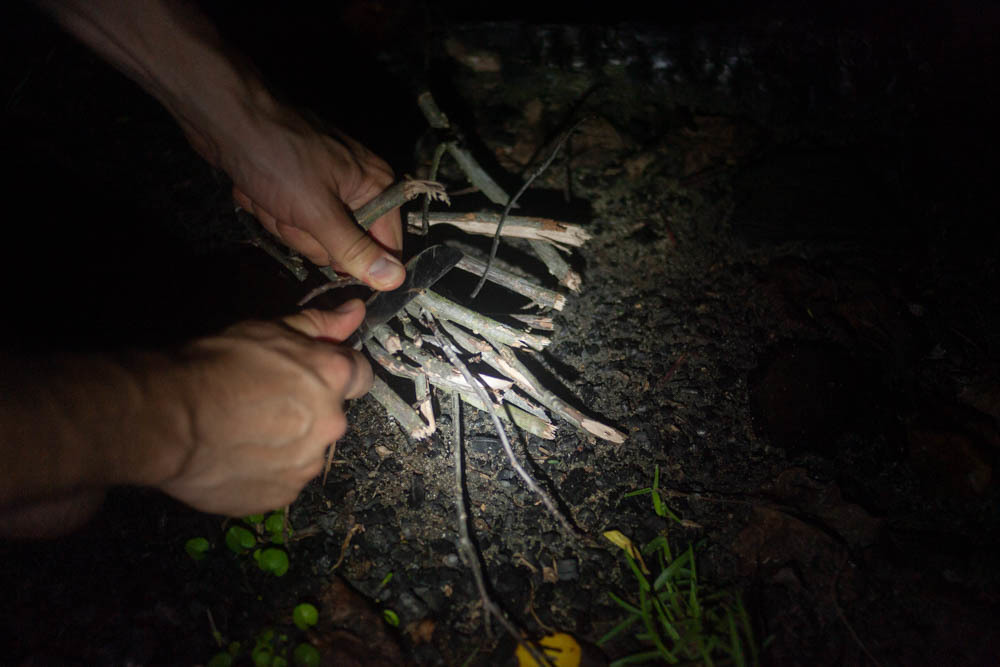

Next, I made a small tipi from small twigs. I roughed them up with a pocketknife, but if I had really wanted a quick igniting kindling tipi, I would have exposed more of the inner wood—bark doesn't actually burn that great!
If you can, shove them down into the dirt a little—nothing's more irritating than a collapsed tipi.
3. The match
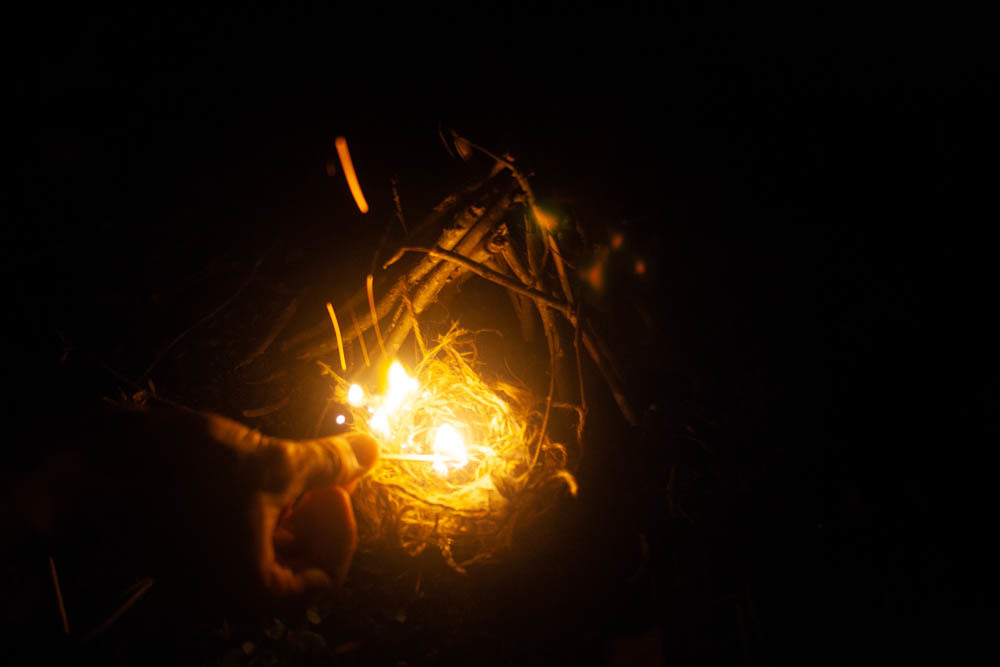
Place your tinder nest directly underneath your tipi and light. The heat from the combustion in the tinder will provide that initial spark for the kindling to ignite, keeping the fire triangle loop going. It's at this point that you'd allow the kindling to burn a little, and begin to add slightly larger pieces to give the fire more fuel. Experience will tell you how much to add, and when.
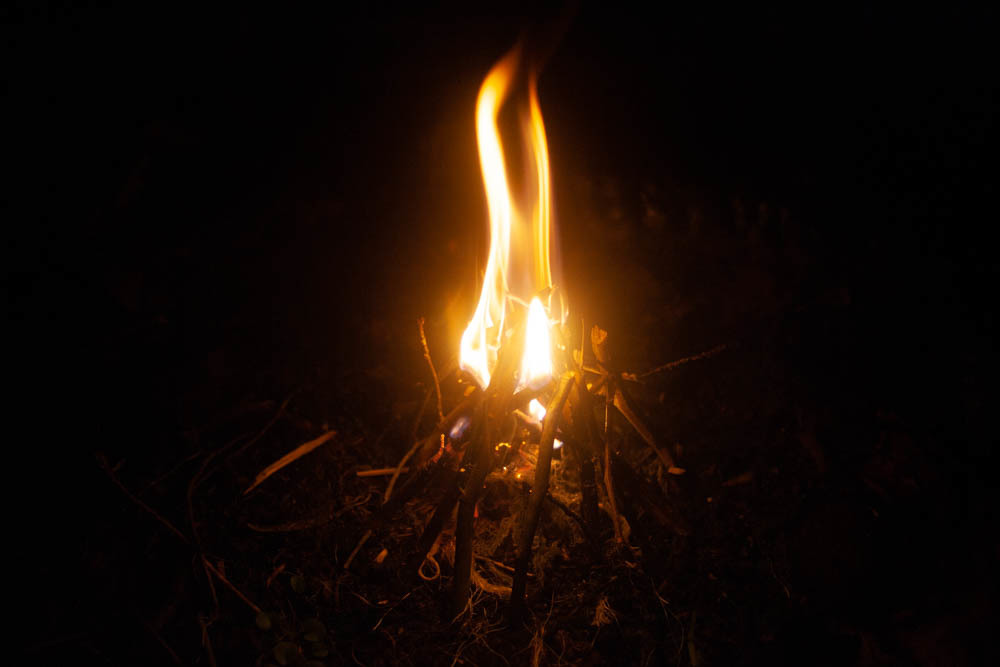
Looking for more? This video from Backpacker magazine includes great discussion of tinder, kindling, and fuel:
As expected, success lies in the prep work. Here's to a whole new season of campfires, friends.

